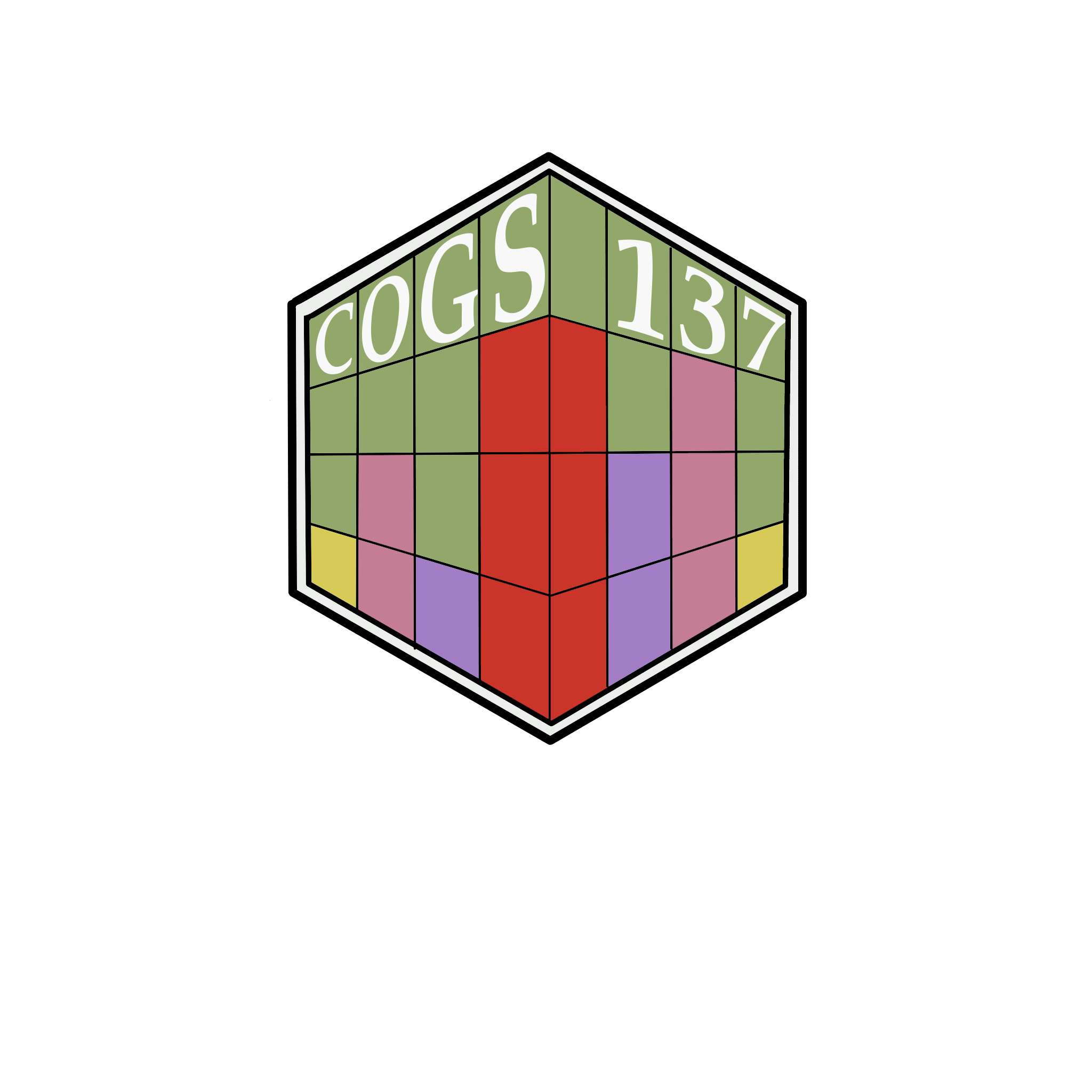11-tidymodels
UC San Diego
COGS 137 - Fall 2024
2024-11-12
tidymodels
Suggested Reading
- Tidy Modeling with R Chapter 7: A Model Workflow
- The package itself has some worked examples: https://www.tidymodels.org/start/models/
Course Announcements
- 📄 Final Project Proposal due tonight
- 🔬 Lab 06 due Thursday
- 📋 Lecture Participation survey “due” after class
Note: hw03 now available; due date pushed back to Friday 11/22
Agenda
- modelling (conceptually)
tidymodels- inference
- machine learning
- HW02 (revisited)
Modelling
🧠 Discussion
- What is a model?
- How are models used in inference? In machine learning?
tidymodels: philosophy
“Other packages, such as caret and mlr, help to solve the R model API issue. These packages do a lot of other things too: pre-processing, model tuning, resampling, feature selection, ensembling, and so on. In the tidyverse, we strive to make our packages modular and parsnip is designed only to solve the interface issue. It is not designed to be a drop-in replacement for caret. The tidymodels package collection, which includes parsnip, has other packages for many of these tasks, and they are designed to work together. We are working towards higher-level APIs that can replicate and extend what the current model packages can do.” - Max Kuhn (
tidymodelsdeveloper)
Benefits:
- Standardized workflow/format/notation across different types of machine learning algorithms
- Can easily modify pre-processing, algorithm choice, and hyper-parameter tuning making optimization easy
tidymodels: ecosystem
The main packages (and their roles):

Inference: intro
In intro stats, you should have learned the central dogma of statistics: we sample from a population
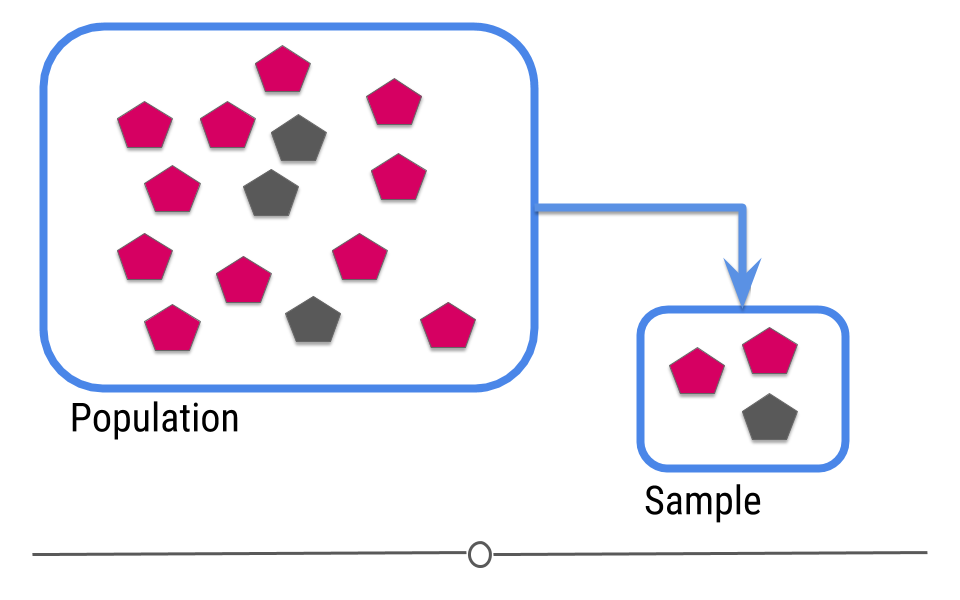
The data from the sample are used to make an inference about the population:
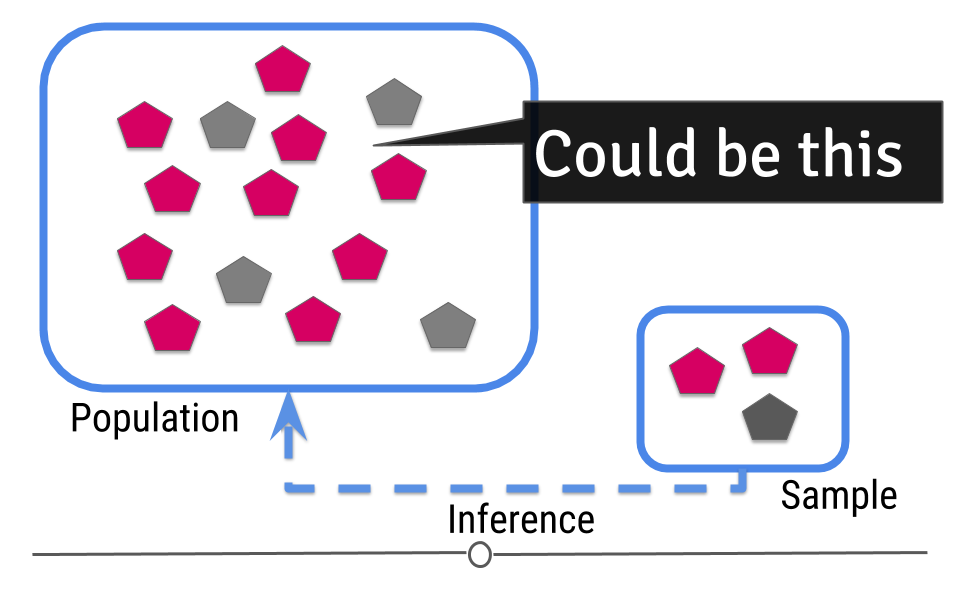
Inference: packages
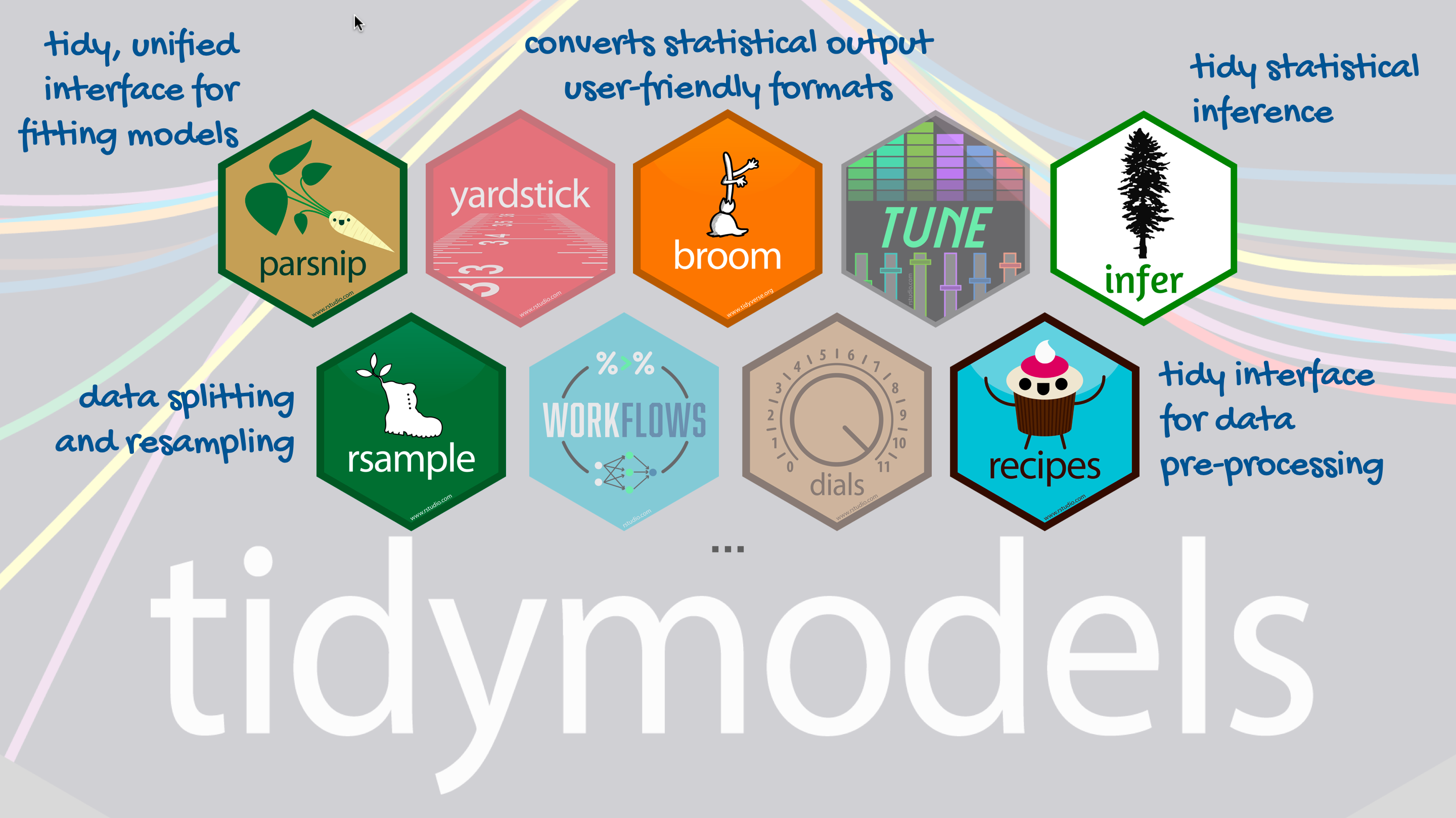
tidymodels
Not part of tidyverse; load separately
Step 1: Specify model
Step 2: Set model fitting engine
Step 3: Fit model & estimate parameters
… using formula syntax
A closer look at model output
\[\widehat{outcome}_{i} = \beta_0 + \beta_1 \times predictor_{i}\] . . .
🧠 How do we read/interpret this model?
Slope and intercept
\[\widehat{outcome}_{i} = \beta_0 + \beta_1 \times predictor_{i}\]
- Slope: For each additional unit increase in the predictor, we could expect the outcome, on average, to be higher, by \(\beta_1\).
- Intercept: When the predictor is zero, we would expect the outcome to be \(\beta_0\) on average.
ML: intro
For prediction, we have a similar sampling problem:
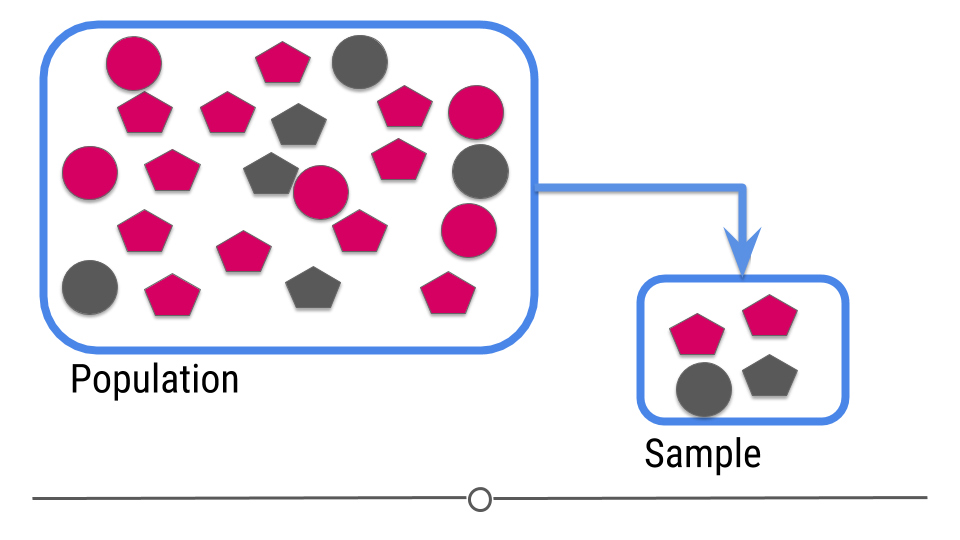
But now we are trying to build a rule that can be used to predict a single observation’s value of some characteristic using characteristics of the other observations.
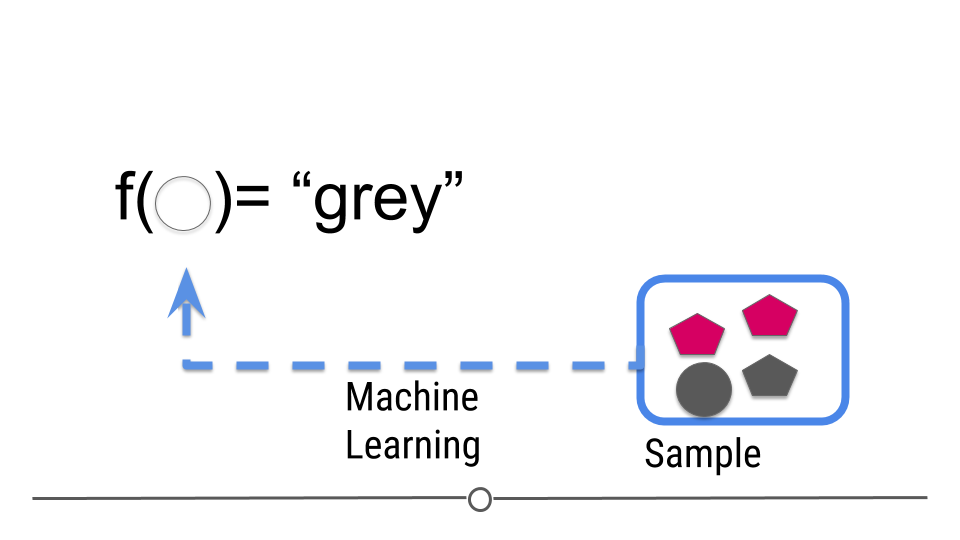
ML: the goal
The goal is to:
build a machine learning algorithm
that uses features as input
and predicts an outcome variable
in the situation where we do not know the outcome variable.
🧠 Summarize/Evaluate: How is this similar/different from inference?
Classic ML
Typically, you use data where you have both the input and output data to train a machine learning algorithm.
What you need:
- A data set to train from.
- An algorithm or set of algorithms you can use to try values of \(f\).
- A distance metric \(d\) for measuring how close \(Y\) is to \(\hat{Y}\).
- A definition of what a “good” distance is.
tidymodels for ML
How these packages fit together for carrying out machine learning:
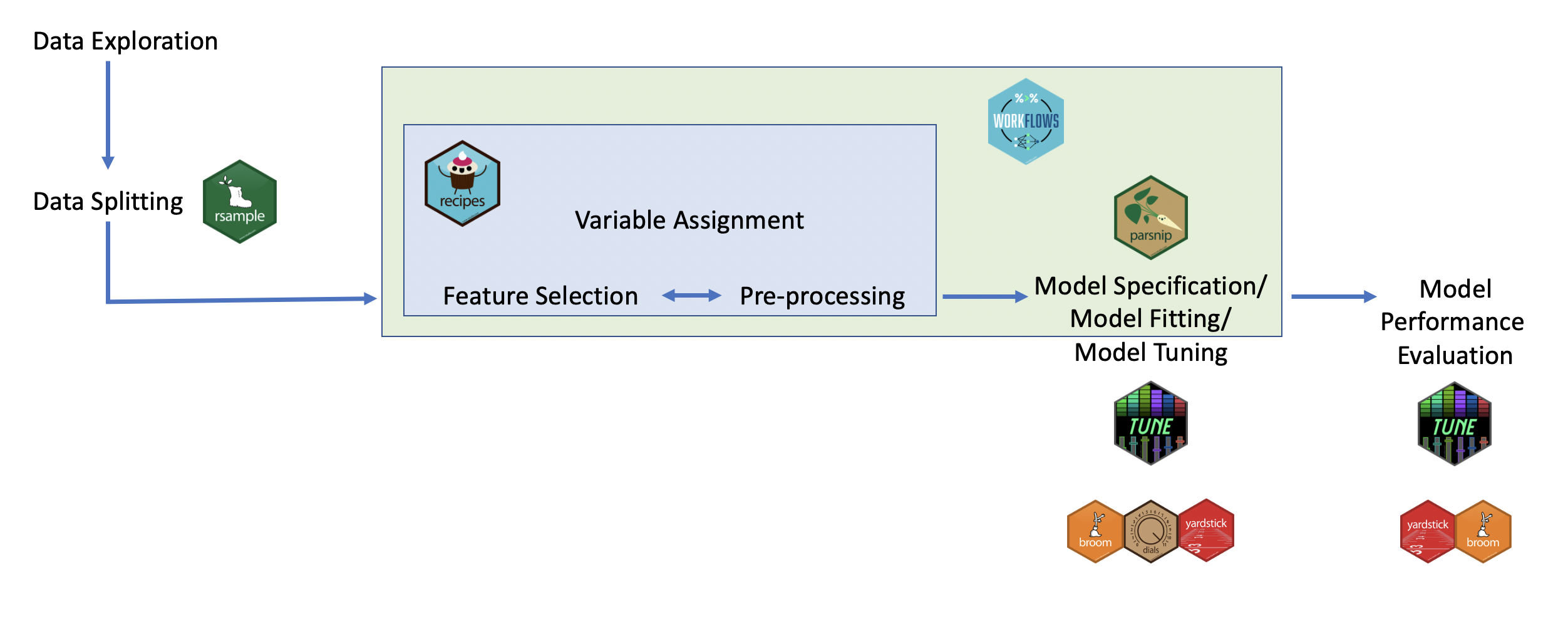
tidymodels: steps
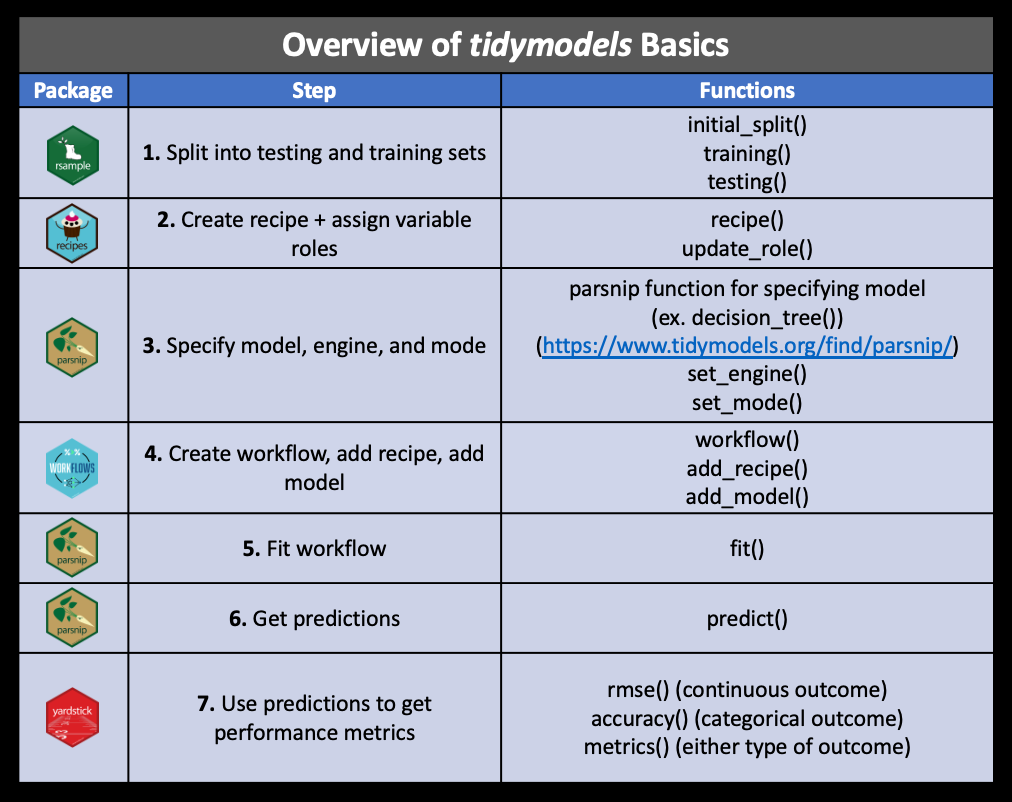
Recap
- Explain what models are used for
- Describe a problem where inference would be beneficial
- Describe a problem where machine learning would be beneficial
- Describe the goals and overall approach to modelling in
tidymodels
HW02 (revisited)
Part I: Imitation
Fight Songs
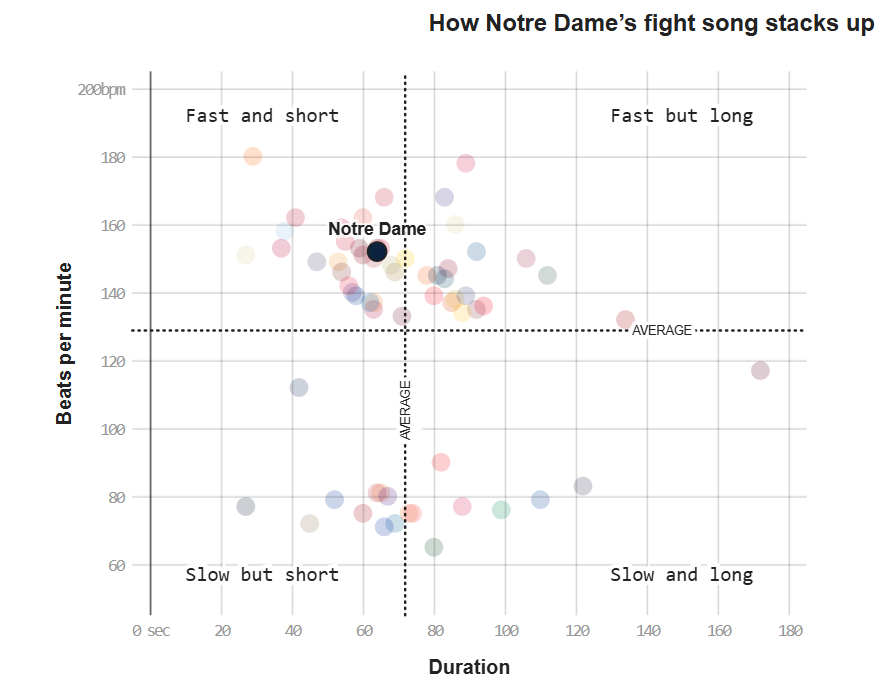

fight <- read_csv('data/fight-songs.csv', show_col_types = FALSE)
# Calculate avg_duration and avg_bpm across fight songs for classifying
avg_duration <- mean(fight$sec_duration, na.rm = TRUE)
avg_bpm <- mean(fight$bpm, na.rm = TRUE)
# Begin ggplot
ggplot(fight, aes(x = sec_duration, y = bpm)) +
# Making sure Notre Dame is colored and referenced differently
geom_point(aes(color = ifelse(school == "Notre Dame", "Notre Dame", factor(school))), size = 5, alpha = 0.5) +
scale_color_hue() +
geom_vline(xintercept = avg_duration, linetype = "dotted", color = "black", size = 0.7) +
geom_hline(yintercept = avg_bpm, linetype = "dotted", color = "black", size = 0.7) +
annotate("text", x = avg_duration + 5, y = 100, label = "AVERAGE", angle = 90, vjust = -0.5, size = 3.5) +
# Adding in my labels for quadrants + AVERAGE
annotate("text", x = 0, y = avg_bpm + 5, label = "AVERAGE", hjust = -0.5, size = 3.5) +
annotate("text", x = 30, y = 190, label = "Fast and short", size = 4) +
annotate("text", x = 130, y = 190, label = "Fast but long", size = 4) +
annotate("text", x = 30, y = 60, label = "Slow but short", size = 4) +
annotate("text", x = 130, y = 60, label = "Slow and long", size = 4) +
geom_point(aes(x = 60, y = 150), color = "black", size = 5) +
annotate("text", x = 60, y = 150, label = "Notre Dame", vjust = -1.5, fontface = "bold") +
labs(x = "Duration", y = "Beats per minute") +
# Scale my axis to adjust to match original
scale_x_continuous(breaks = seq(0, 180, by = 20)) +
scale_y_continuous(breaks = seq(40, 200, by = 20), limits = c(40, 200)) +
coord_fixed(ratio = 0.8) +
theme_minimal() +
# Theme adjusting
theme(
plot.margin = margin(t = 10, r = 10, b = 10, l = 20),
legend.position = "none",
panel.grid.minor = element_line(color = "grey90", linetype = "solid"),
panel.grid.major = element_line(color = "grey80", linetype = "solid"),
panel.border = element_rect(color = "black", fill = NA))
fight_songs_data <- fight
mean_bpm <- mean(fight_songs_data$bpm, na.rm = TRUE)
mean_duration <- mean(fight_songs_data$sec_duration, na.rm = TRUE)
ggplot(fight_songs_data, aes(x = sec_duration, y = bpm)) +
geom_point(aes(color = school), alpha = 0.2, size = 5) +
geom_vline(xintercept = mean_duration, linetype = "dotted", color = "black") +
geom_hline(yintercept = mean_bpm, linetype = "dotted", color = "black") +
geom_point(data = filter(fight_songs_data, school == "Stanford"),
aes(x = sec_duration, y = bpm),
color = "red", size = 5, shape = 21, fill = "red") +
geom_text(data = filter(fight_songs_data, school == "Stanford"),
aes(x = sec_duration, y = bpm, label = "Stanford", fontface = "bold", family = "Arial"),
vjust = -1, color = "black", size = 4) +
labs(
title = "How Stanford's Fight Song stacks up",
x = "Duration",
y = "Beats per minute"
) +
scale_y_continuous(breaks = seq(60, 200, by = 20),
labels = c("60", "80", "100", "120", "140", "160", "180", "200bpm"),
limits = c(60, 200)) +
scale_x_continuous(breaks = seq(0, 180, by = 20),
labels = c("0 sec", "20", "40", "60", "80", "100", "120", "140", "160", "180")) +
annotate("text", x = 10, y = 190, label = "Fast and short", size = 4, hjust = 0, family = "Courier") +
annotate("text", x = 10, y = 70, label = "Slow but short", size = 4, hjust = 0, family = "Courier") +
annotate("text", x = 140, y = 190, label = "Fast but long", size = 4, hjust = 1, family = "Courier") +
annotate("text", x = 140, y = 70, label = "Slow and long", size = 4, hjust = 1, family = "Courier") +
annotate("text", x = max(fight_songs_data$sec_duration) - 20, y = mean_bpm,
label = "AVERAGE", vjust = 0.5, hjust = -0.1, color = "black", size = 3, family = "Arial") +
theme_minimal() +
theme(
legend.position = "none",
plot.title = element_text(hjust = 0.5, face = "bold", family = "Arial"),
panel.grid.major = element_line(size = 0.5),
panel.grid.minor = element_blank()
)Hate Crimes (Adam)



# Load data
url <- "https://raw.githubusercontent.com/fivethirtyeight/data/master/hate-crimes/hate_crimes.csv"
hate_crimes <- read_csv(url)
states_map <- map_data("state")
hate_crimes <- hate_crimes |>
mutate(state = tolower(state))
map_data <- states_map |>
left_join(hate_crimes, by = c("region" = "state"))
#Graph Numero Uno
ggplot(map_data, aes(x = long, y = lat, group = group, fill = avg_hatecrimes_per_100k_fbi)) +
geom_polygon(color = "white") +
scale_fill_gradient(low = "#ffe4d0", high = "#ba3900", na.value = "gray", name = "Hate Crimes\nper 100k") +
labs(title = "PRE-ELECTION HATE CRIME RATES POST-ELECTION",
subtitle = "Average annual hate crimes per 100,000 residents, 2010-15") +
theme_minimal() +
theme( axis.text.x = element_blank(),
plot.title = element_text(face = 'bold'),
axis.ticks.x = element_blank(),
axis.text.y = element_blank(),
axis.ticks.y = element_blank(),
axis.title.x = element_blank(),
axis.title.y = element_blank(),
panel.grid = element_blank(),
legend.position = "top",
legend.title = element_text(size=6),
) +
coord_fixed(1.3) #Unstretch#Second Graph
ggplot(map_data, aes(x = long, y = lat, group = group, fill = hate_crimes_per_100k_splc)) +
geom_polygon(color = "white") +
scale_fill_gradient(low = "#b0e2c8", high = "#006646", na.value = "gray", name = "Hate Crimes\nper 100k") +
labs(title = "POST-ELECTION HATE CRIME RATES POST-ELECTION",
subtitle = "Average annual hate crimes per 100,000 residents, 2010-15") +
theme_minimal() +
theme( axis.text.x = element_blank(),
plot.title = element_text(face = 'bold'),
axis.ticks.x = element_blank(),
axis.text.y = element_blank(),
axis.ticks.y = element_blank(),
axis.title.x = element_blank(),
axis.title.y = element_blank(),
panel.grid = element_blank(),
legend.position = "top",
legend.title = element_text(size=6),
) +
coord_fixed(1.3) #UnstretchCongress Age


congress_data = read_csv("data/data_aging_congress.csv")
congress_data <- congress_data |>
mutate(year = as.numeric(format(start_date, "%Y"))) #Extracted year from start_date
#Grouping Congress by session to calculate median age
congress_median_age <- congress_data |>
group_by(congress, year, chamber) |>
summarise(median_age = median(age_years, na.rm = TRUE)) |>
ungroup()
ggplot(congress_median_age, aes(x = year, y = median_age, color = chamber)) +
geom_step(linewidth = 1) +
#Senate
geom_text(data = congress_median_age |>
filter(chamber == "Senate", year == 2023),
aes(label = "65.3"),
hjust = -0.2, vjust = +0.3, size = 3, color = "black", show.legend = FALSE) +
#House
geom_text(data = congress_median_age |>
filter(chamber == "House", year == 2023),
aes(label = "57.8"),
hjust = -0.2, vjust = -0.5, size = 3, color = "black", show.legend = FALSE) +
#Titles
labs(title = "Median Age of the U.S. Senate and House by Congress, 1919 to 2023",
subtitle = "The House and Senate are older than ever before",
x = "Year",
y = "Median Age",
color = "Chamber") +
scale_color_manual(values = c("Senate" = "#5b41d1", "House" = "#55aa5c"))+
#Scaling both axis
scale_x_continuous(limits = c(min(congress_median_age$year), max(congress_median_age$year)), breaks = seq(1920, 2020, by = 10)) +
scale_y_continuous(limits = c(45, NA)) +
theme_minimal() +
theme(plot.title = element_text(face = "bold", size = 14),
plot.subtitle = element_text(size = 10),
axis.title = element_text(size = 12),
legend.position = "top",
aspect.ratio = 1/4,
panel.grid.major.x = element_blank(),
panel.grid.minor.x = element_blank(),
panel.grid.minor.y = element_blank())Part II: Sad Plot
Votes
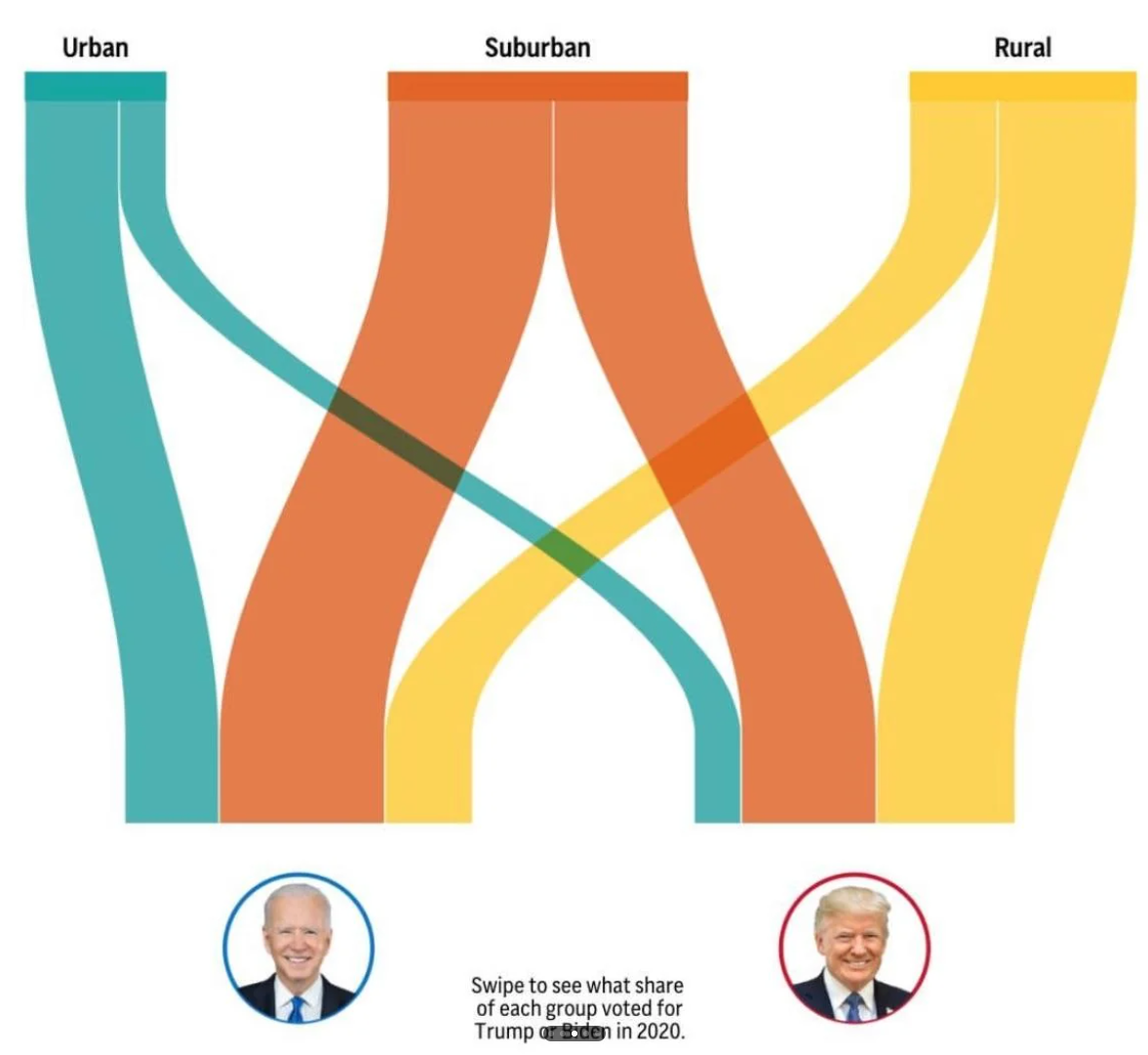

# estimate data
d <- data.frame(
area = rep(c('Rural', 'Suburban', 'Urban'), each = 2),
voted = rep(c('Biden', 'Trump'), times = 3),
percentages = c(35, 65, 55, 45, 70, 30)
)
# plot
ggplot(d, aes(x = area, y = percentages, fill = voted)) +
geom_bar(stat = "identity", position = "dodge") +
labs(
title = "Votes for Trump and Biden in 2020 Elecxtion Based on Location",
x = "Location",
y = "Percentage of Votes",
fill = "Candidate" # Legend title
) +
scale_y_continuous(breaks = seq(0, 100, by = 10), limits = c(0, 80)) +
theme_minimal() +
scale_fill_manual(values = c("#0033A0", "#C8102E")) # Custom colors for groupsCS01 Data (Sandy)
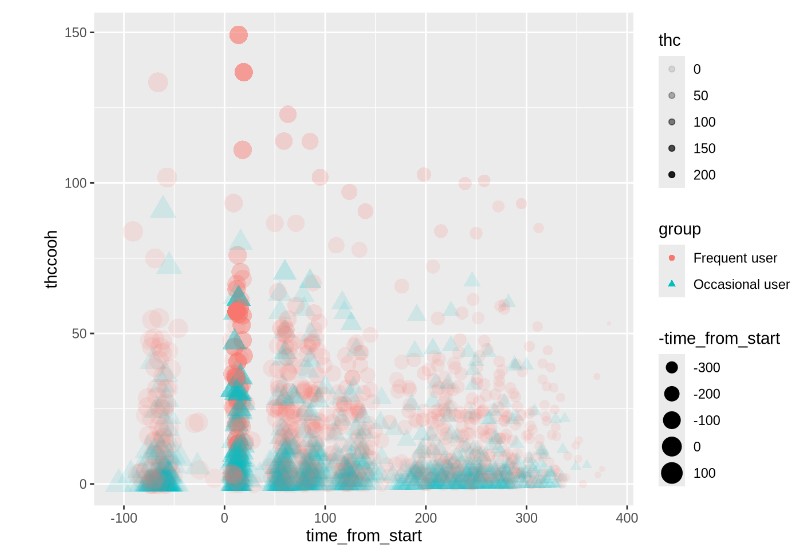

WB <- read_csv("https://github.com/ShanEllis/datasets/raw/refs/heads/master/Blood.csv")
WB <- WB |>
mutate(Treatment = fct_recode(Treatment,
"5.9% THC (low dose)" = "5.90%",
"13.4% THC (high dose)" = "13.40%"),
Treatment = fct_relevel(Treatment, "Placebo", "5.9% THC (low dose)"),
Group = fct_recode(Group,
"Frequent User" = "Frequent user",
"Occasional User" = "Occasional user")) |>
janitor::clean_names() |>
rename(thcoh = x11_oh_thc,
thccooh = thc_cooh,
thccooh_gluc = thc_cooh_gluc,
thcv = thc_v) |>
mutate(timepoint = case_when(time_from_start < 0 ~ "pre-smoking",
time_from_start > 0 & time_from_start <= 30 ~ "0-30 min",
time_from_start > 30 & time_from_start <= 70 ~ "31-70 min",
time_from_start > 70 & time_from_start <= 100 ~ "71-100 min",
time_from_start > 100 & time_from_start <= 180 ~ "101-180 min",
time_from_start > 180 & time_from_start <= 210 ~ "181-210 min",
time_from_start > 210 & time_from_start <= 240 ~ "211-240 min",
time_from_start > 240 & time_from_start <= 270 ~ "241-270 min",
time_from_start > 270 & time_from_start <= 300 ~ "271-300 min",
time_from_start > 300 ~ "301+ min"))
WB |>
ggplot(mapping = aes(x = time_from_start,
y = thccooh,
color = group)) +
geom_point(size = 3) +
labs(x = "Time After Smoking (Minutes)", y = "THCCOOH",
title = "Change in THCCOOH Levels After Smoking",
subtitle = "Levels measured over time for frequent and occasional users",
color = "Group") +
theme(plot.title = element_text(size = 20, hjust = 0, vjust = 2),
plot.subtitle = element_text(size = 16, hjust = 0, vjust = 1)) +
scale_color_manual(values = c("Frequent User" = "#fc8d59",
"Occasional User" = "#91bfdb")) +
theme_minimal()